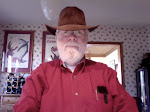The AC two row corn picker is mounted on a 1940s WD Allis tractor. The IH 234 corn picker is on a 560 IH diesel tractor from the 1950s. Some farmers were still picking ear corn in the 1950s, but many were switching to combines which produced corn kernels discarding stripped ears. One problem of storing shelled corn was moisture content. If moisture was too high, the corn rotted in the bin. Gas fired corn driers accompanied shell corn so it can be safely shipped and stored without deteriorating. While some corn is fed to animals, much of it is processed industrially for oil and alcohol. Since the 1960s few farmers used corn pickers like the ones above. The process handling corn has changed dramatically.
Monday, September 2, 2013
IH and Allis Chalmers 2 Row Corn Pickers
The AC two row corn picker is mounted on a 1940s WD Allis tractor. The IH 234 corn picker is on a 560 IH diesel tractor from the 1950s. Some farmers were still picking ear corn in the 1950s, but many were switching to combines which produced corn kernels discarding stripped ears. One problem of storing shelled corn was moisture content. If moisture was too high, the corn rotted in the bin. Gas fired corn driers accompanied shell corn so it can be safely shipped and stored without deteriorating. While some corn is fed to animals, much of it is processed industrially for oil and alcohol. Since the 1960s few farmers used corn pickers like the ones above. The process handling corn has changed dramatically.
Subscribe to:
Post Comments (Atom)



It is amazing (wow... a pun!) how many products we get from corn. I often wonder how it is done and you have educated me a bit. These are interesting machines.
ReplyDeleteCounting the corn used with feedlot animals, nearly 2/3 of all our food is corn based. Corn based alcohol is in our cars. It is a critically important crop.
DeleteI got a bunch im my garden... my tummy awaits.
ReplyDeleteI'll bet you still just pick it by hand.
DeleteIt's great that these old farm machines are being maintained. They look great.
ReplyDeleteThese are great. They sure look a lot different than what we see in the fields now.
ReplyDeleteI love the look of those things! :-)
ReplyDeleteIt is embarrassing to admit that I know so little about the processes by which the food on my table gets there. I am grateful for the farmers and their machinery. I just don't know anything about it.
ReplyDeleteJack, you would be surprised at how common corn products are in the things around us. High Fructose corn syrup (HFCS), corn starch, and corn oil are in just about everything we eat and drink. Even Bourbon whiskey is made from 90 percent corn. There is also corn products in beers and wine. Soda pop, fruit drinks, even orange juice is sweetened with HFCS, Most fried foods are fried in corn oil. Sauces, gravies, soups, most mixes (cakes, waffles, biscuits, etc) are corn products. Baked goods contain corn products such as starches and oils from corn. The tires and spark plugs on your car couldn't be made without corn. Of course tortillas, corn chips, and cereals are corn products. Ice creams, sherbets, candy, marshmallows, and most sweet foods have corn sweeteners in them. Stabilizers and sweeteners in yogurts are made from corn.
DeleteDiapers, paper plates and cups, writing paper and envelopes rely on corn starch. Even the glue that attaches stamps and seals envelops are made from corn.
As I said, most corn goes to industrial production for wet or dry milling which produces industrial refinements that goes into thousands of products we never associate with corn. Large corporations such as ADM and Monsanto turn corn into these products.
What a wonderful education for a suburban easterner like me! I probably knew a few of these things, but the rest is (are?) eye openers. Thanks, Taken.
DeleteP.S. You mentioned my interest in the arts. Yes, when I was a kid I wanted to be an artist, but as I got older I learned that artists starve, and I didn't want to starve. So, I took a professional/businessman path instead, but used my position to raise money for the arts from suits like me. I spent 15 years on the board of the Greater Hartford Arts Council, many of them as Treasurer and two as President.
ReplyDelete